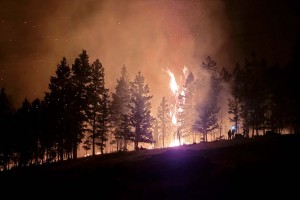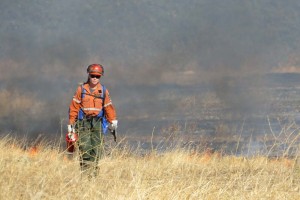Tens of thousand of sugarcane employees in Central America are working themselves to death, cutting stalks of cane under a beating sun for long hours and earning piecemeal wages. Chronic Kidney Disease has taken the lives of more than 20,000 workers in the region. Most of those who have died are men between the ages of 20 and 40.
The type of kidney failure experienced by sugarcane workers is not related to diabetes or hypertension, the most common drivers of Chronic Kidney Disease (CKD) in North America. Specifically known as "Chronic Kidney Disease of non-traditional causes," or CKDnT, the disease instead affects the tubular part of the agricultural workers' kidneys and is consistent with dehydration and toxic poisoning. Currently, only a kidney transplant can save a patient suffering from CKDnT. Workers in Nicaragua can barely afford dialysis, let alone a transplant.
THE RISE OF A LABOUR ACTIVIST
Roberto Valdivia worked for seven years in the sugarcane fields in Chichigalpa, along the northern Pacific coast of Nicaragua, before he was fired after contracting CKDnT. In an interview with Our Times via Skype, the 34-year-old Valdivia says being unable to work has turned him into a labour activist.
"There are two reasons I am not working," he says. "First, I had an accident at a factory and the discs in my neck were affected. In that same year, I was diagnosed with CKD." (Workers and others directly involved with the issue often refer to it simply as CKD.) "At that point the industry told me I could not continue to work."
Sugar mill owners monitor employees' health and require them to have medical checks. If a field worker's blood test shows signs of kidney dysfunction, their annual contract may not be renewed. "All of us workers believe it is because of working very, very long hours under a hot sun," Valdivia says. "We don't get any breaks for going to the bathroom, for drinking, for resting — for anything. It is overuse of my body."
Equally tragic is that research seems to indicate death from this form of chronic kidney disease might be avoided by simply ensuring field workers have adequate amounts of shade, rest and hydration.
Valdivia believes pesticides may also be a factor in the development of CKDnT. "The workers are around very strong chemicals in the fields, and the water that workers are given by the sugar mill has a strange taste to it — we believe it is contaminated.
"As of this harvest season, which started in November 2015, 700 people have been fired for being sick," Valdivia says. Within the region of Chichigalpa, he says 12,000 people between 16 years of age and 40 have CKDnT, and many more over 40 have the disease, too.
Valdivia says he receives a monthly disability cheque of about $70 from the government for his neck injury, but nothing for having contracted the kidney disease. "I am not getting any care or any pension for CKD.
"Because of the CKD, every industry is closed to me." If he managed to find a job, "my disability payment would be taken away," says Valdivia.
His retelling of the breach in safety rules which caused his factory accident offers a window on the precarity so many workers in Chichigalpa deal with. "One of the years when I was working in the factory, instead of the field, a pressure tube exploded. As the tube operator, I had to run up the ladder to turn off the pressure from above while everyone else evacuated."
Valdivia says the company had changed the route of the tubes without letting him know, though they are required to inform workers of such changes. He ran into a pipe that had been placed above the ladder, consequently shattering his collarbone and the first four vertebrae of his spine. He was knocked unconscious.
Surgery afterwards was out of the question, since it might have paralyzed him. "There is no recovery from that," says Valdivia.
Valdivia and others who have had factory accidents have formed a group and attempted legal action against their employer. However, he says, the government has been impeding their efforts. Valdivia, though, remains determined.
"I have dedicated my last couple of years after being on disability to becoming a photographer and to taking the testimonies of people who have been in similar situations. There have been a lot of people who have been gravely injured or killed in accidents, but the government and media have not been allowing them to share their stories. I've been trying to photograph them and start a small awareness campaign in Chichigalpa."
Valdivia has tried self-employment to supplement his disability payment. "I run a small taxi service, but it's very hard working with my CKD. I have gotten significantly sicker, so I haven't been able to keep up with this job."
There is no recovery from the kind of neck injury Valdivia sustained. As for his chronic kidney disease, Valdivia says "there is no cure or recovery" from that, either. "You can't be cured from CKD. It's a chronic condition."
Valdivia says the government's social security benefit requirements need to change so workers under 40 years old with CKDnT can qualify. Even those over age 40 must have worked a specific amount of time to qualify for various levels of care, he says. Applicants must have worked 10 years in the sugarcane fields, for instance, to qualify for dialysis. "Most people who are getting sick now are in their third or fourth year of work," Valdivia says.
Valdivia's community lacks a dialysis clinic and people with CKDnT are not given proper medicine, he says. "We are given multivitamins, which isn't actually helpful for kidney disease. We need a specialist who can come and talk to us."
EMPLOYMENT STANDARDS CRUCIAL
Valdivia feels the sugarcane industry has proven they don't care, since they have not acted over "the many generations" this has been going on. "The only solution is for the government to make and enforce rules about how many hours employees are working, how much they are paid, how much rest they are allowed, and about water," Valdivia says.
He believes one of the big problems preventing change is the fact that President Daniel Ortega and the sugarcane owners are "very hand in hand," to the point where their children have now intermarried. "Not only are they not caring to control what the industry is doing," he says about the government, "but the rules that are already there are being ignored. The government doesn't give the employer any consequences."
When sugarcane workers protest against the industry, Valdivia says, they are "by default, protesting against the government," and when they try to seek government help, "it's not happening. The government always sides with the industry. They often send riot squads and police to break up protests."
In 1979, citizens organized widely into the radical Sandinista movement and rose up against dictator Anastasio Somoza. Their revolution was a success. But the country is still headed by President Daniel Ortega, once a hero, and it seems revolutionary ideals have soured.
THE ISLE OF WIDOWS
American filmmaker Ed Kashi travelled to the sugarcane fields in Nicaragua to learn more about the CKDnT health crisis that Valdivia speaks of. He talked to people in the village of La Isla, also known as "The Isle of Widows," in Chichigalpa. In 2015, Kashi released a powerful 14-minute documentary entitled Under Cane.
Chichigalpa is "ground zero," says Kashi in an interview with Our Times. "Every day there is a funeral. It's a company town with sugarcane as its main employer."
Kashi's film begins with a street scene in La Isla. A Spanish-speaking woman tells viewers (with the aid of English subtitles) of 14 deaths on this one street alone. The camera moves to an open-casket funeral and the corpse of a man surrounded by his grieving family. "It is an epidemic," the narrator states. Of the village's 350 households, 100 people have died from CKDnT.
Next, the viewer is introduced to Felix Santo Calero, a 39-year-old sugarcane worker. He describes his initial symptoms of Chronic Kidney Disease: the feeling of suffocating, and of being nauseous. "A peasant enters well," he says about working in the cane field. "But after one season you leave sick. And they say, 'You are useless. You should quit. You can't work here anymore.'"
When Calero became extremely ill, he was rushed to the hospital. He had dialysis and, initially, he recovered. "We're screwed, we're busted," he says in the film. "And without the help of anybody — only God." He says of the cane field, "We leave our blood there. We leave it."
Calero died shortly after Kashi completed Under Cane. He was 40 years old.
"International protocols need to be established," Kashi says, "to clearly identify the illness as a disease." The filmmaker says CKDnT is occurring around the globe and "more and more in hot places among labourers and agricultural workers. It's a disease of the working poor, particularly agricultural workers."

A sugarcane worker closes the hydration tent on a plantation in Chichigalpa, Nicaragua. PHOTOGRAPH: ED KASHI/VII
CLIMATE CHANGE'S IMPACT
Kashi believes climate change may be a factor. Sugarcane employees, toiling under temperatures as high as 38 degrees Celsius, are paid by the amount cut and are under pressure from supervisors to meet quotas. It's a condition Kashi likens to slave labour.
Workers find ways around the employer's mandatory blood test, too. "When the workers' blood levels go back down, they go back to work," Kashi says. "That's because they need the work." Sick workers can also obtain false identification and work for subcontractors — an "open secret," which only leads to more exploitation, as subcontractors take advantage of the workers by paying inferior wages.
Rosa Santos Martinez, one of La Isla's many widows, was married to a sugarcane worker who suffered from CKDnT for eight years, after working 25 years in the field. In Kashi's film, she tells viewers her husband was on dialysis for six months. "He fought hard against the disease," Martinez says. "Here in the community, everyone loved him." Now Martinez's son Jimmy, aged 25, is sick, after three seasons cutting cane. No one will hire him.
Kashi notes that researchers from Western countries who are investigating the cause of CKDnT are coming closer to a unified view that sees dehydration as a strong factor.
Ideally, any worker exposed to heat stress and volume depletion should have water with a specific concentration of sugared chemicals, such as electrolyte supplementation, and the liquid should be in a container strapped to the worker, so they can drink regularly. Other preventative measures should include: reducing workers' daily hours of work, ensuring they wear protective clothing, ensuring they spend breaks in the shade, and providing an on-site mobile health clinic.
REFUGEES IN THEIR OWN LAND
"These people are refugees in their own land," Kashi says. "They are the landless, rural poor, the campesinos. They live in wood, tin and tarp shacks with no running water and no plumbing."
Nicaraguans live in the second-poorest country in the Americas after Haiti. Sugar accounts for about five per cent of Nicaragua's GDP and a third is exported to the United States.
"It's an incredible indictment of the Sandinista government," Kashi observes. "They are in with sugar mill owners like the Pellas family. It's an oligarchy."
Assisting sugarcane workers with on-the-ground advocacy is La Isla Foundation (LIF), founded in 2008. An international research and policy non-governmental organization (NGO), it advocates "at the intersection of public health and human rights," according to its website.
Juan Salgado, a former sugar mill worker, is one of LIF's founders. In Kashi's film, Salgado relays the mixed feelings people have toward their employers. Men obtain stable work from them, Salgado explains, but there is frustration because the work is killing them. "If we don't die of the disease, we'll die of hunger, because there's nowhere else to work," he says.
Workers such as Salgado believe CKDnT is caused by multiple factors, including long workdays, "the suffocating heat," and chemicals. A 2015 study by Boston University's School of Public Health points out that in El Salvador in 2013, the National Assembly voted to ban 53 agrichemicals because of the perceived link to Chronic Kidney Disease.
According to Kashi, women are now working in the sugarcane fields and they are becoming sick too. He says CKDnT is also prevalent in Mexico, Guatemala, El Salvador as well as countries in Asia. Kashi is working on a feature-length documentary which will look at the global scope of kidney disease among agricultural field workers.
MORE REST, WATER AND SHADE NEEDED
Kashi is also keenly interested in a pilot project in El Salvador, where Juan Wright, a sugar mill owner, has agreed to implement La Isla Foundation's "Worker Health and Efficiency (WE) Program," a list of recommendations which include "more rest, water and shade."
Since Wright has implemented the program in his cane fields, there has been a 40 per cent increase in production, a situation Kashi says is a "win-win" for both employees and the employer. "We need to put pressure on sugarcane companies to step up and pay attention," the filmmaker says. "These countries are not providing adequate levels of health care for workers who get CKD." For the workers, "it's a death sentence," he concludes.
LA ISLA FOUNDATION
Jason Glaser is another co-founder of La Isla Foundation. In an interview with Our Times, Glaser says he stumbled on the sugarcane workers' health crisis while visiting Nicaragua in his former role as an activist filmmaker. Born and raised in the rust belt of the northern United States, Glaser grew up observing the devastating impact corporations can have on working people.
"Studies are showing sugarcane workers are getting sick younger and younger," Glaser says. "The average age of death in the Chichigalpa district is 46."
Before launching La Isla Foundation in Nicaragua, Glaser advocated for sugarcane workers as an activist with Fair Food Inc, a Dutch based NGO. Fair Food's approach, according to its website, is similar to that of La Isla Foundation: "For consumers of sugar, it's not okay for us to know that workers are sick and dying from their work cutting sugarcane, and to do nothing about it."
But a boycott of sugar is not the answer.
"We do not want to push the workers out of employment," the Fair Food website also states. "Instead, we are engaging in constructive dialogue with companies and governments to find lasting, meaningful solutions that enable workers to keep doing their job in a safe and healthy way."
Glaser continues his work with La Isla Foundation from his new post in El Salvador. "There is no union for cane cutters," Glaser says. "El Salvador workers need social security and better pay."
Glaser doesn't want mill owners to be threatened by the recommendations offered by La Isla Foundation. He is hoping, instead, that they will "look at this as an opportunity to start introducing better work practices."
Employers have resisted taking responsibility for the disease, however. They have even hired their own researchers, who have suggested CKDnT could be genetically based, and not an occupational disease. Glaser says the more employers dig in their heels and deny the problem, the more they are "absolutely going to be liable."
"We are putting social pressure on sugarcane producers' associations," Glaser says. After years of denying responsibility, some corporations are beginning to take action.
WHY ARE DEATHS ON THE RISE NOW?
The question remains: Why have thousands of sugarcane workers in Central America's hot agricultural lowlands started getting sick only in the past two decades? Despite the best efforts of researchers, Glaser says the definitive cause of CKDnT is still a puzzle. "Workers used to cut two tons a day," he says, offering one of several possible factors. "Now it is up to 10 tons a day." He also notes sugar wasn't the dominant crop in many countries before, but now it is.
Glaser says he can foresee farm owners buying off widows, taking over their land and mechanizing. If workers are out of jobs, however, what will they do?
"Central American politics is about harm to the populous for the benefit of elites," he says, citing the government brutality toward Indigenous people in Guatemala in the 1980s as one of many examples.
What about the status of sugarcane workers in post-revolution Cuba? "Cuba has more mechanization," Glaser answers. He also says the government has made changes and currently sugarcane labourers cease work in mid-afternoon. He believes the pilot project with Juan Wright is creating "a sea change," though.
A PERFECT STORM
"We need to raise the profile of this disease," Glaser says, "and we need objective research and real data." Glaser also says buyers of sugar need to verify their supply chain by demanding cane growers are ethical. "They need to talk to workers onsite and support companies who are doing the right thing," he says.
"It's a broken occupational and health system. The climate has gotten hotter and, along with chemicals present in the fields, CKD could be part of a perfect storm."
Roberto Valdivia wants the world to know, too. Talking about CKDnT in Nicaragua "is very, very controversial," Valdivia says. Journalists are fired for covering the issue and labour lawyers are intimidated if they take on cases. "Lawyers who have been working very strongly for the community have actually been put in jail on false charges," he says. And trade union advocacy continues to be a dangerous option in a region where human rights are frequently violated, too.
"It is a huge priority of mine to talk to international media sources so your leaders understand this is a big problem; one that has not been given any positive attention in Nicaragua. It's only been quieted."
"People need to know what is going on," Valdivia insists. "Even within Nicaragua people do not know what is happening. This news doesn't get to Managua. Protests are being broken up. So, the more people around the world know, the more people in Nicaragua will too."
Janet Nicol is a Vancouver-based freelance writer and regular blogger.















